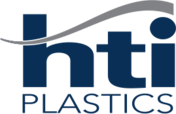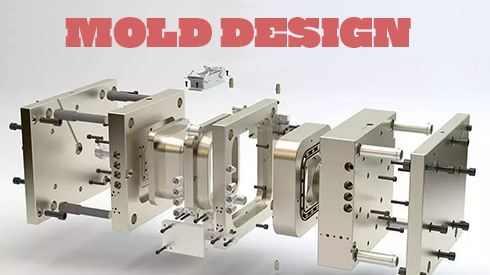Quality Mold Design.
In order to repeatedly make a high-quality molded part, all of the key inputs have to be considered – part design, material selection, mold design, and establishing a robust process. At HTI Plastics, we consider all of these elements on a new project. This article is going to focus on mold design.
There are many items to consider when designing a new mold in order to determine how best to build a tool.
First, the part design has to be reviewed to determine if there were any features that would make the part difficult to mold – items like undercuts or deep texture that would require some type of cam or slide action in the mold in order to have the part release from the mold and eject cleanly. Surface finish requirements of the part will also dictate mold surface requirements – the part may have texture, or it may require polishing of the mold to achieve a smooth surface.
The cooling of the tool is also a major consideration. The design of the cooling circuits will impact not only the cycle time of the process, but also plays a role in ensuring the parts are straight and don’t warp.
The material that the part will be made of will also impact the mold design. For example, materials with fiberglass additives will generally require a harder steel to minimize wear and prolong tool life. PVC is a very corrosive material and requires stainless steel molds to reduce corrosion and prolong tool life.
Gate design is another consideration that will have a long-term impact on costs. A tab gate may require a secondary operation in order to trim the part and increase costs, whereas a tunnel or cashew gate will typically break clean in the molding process and do not require trimming. Material type and part design will also play in a role in the type of gate that can be used so there isn’t one standard gate that will work for all applications.
HTI Plastics reviews these factors and others when conducting a design review on a new tool. The tool build does not start until a design review has been completed with the mold builder, HTI engineering, and HTI Tooling. All HTI Plastics engineers involved in new tooling are certified through the ANAB-Accredited Plastics Technology & Engineering Program through the American Injection Molding Institute. This program provides training on the key inputs described at the beginning of this article – Plastic Materials – Mold Design – Injection Molding – Part Design – so they have an in-depth understanding of the relationship between all four of these inputs.
HTI Plastics manufacturing company, founded in 1985, entered into the plastics manufacturing business as a small plastics molder, with in-house engineering, and tool room, and we trace our product debut to the design and manufacturing of one of the first vaginal applicators. Today, our plastic pharmaceutical applicators are used in a wide range of treatments in both prescription and over-the-counter markets, and we’ve expanded into the design and production of custom and proprietary thermoplastic injection-molded products for a variety of pharmaceuticals, animal health, food packaging, sporting goods, and other custom products.
Chris Reed – Director of Engineering
HTI Plastics


